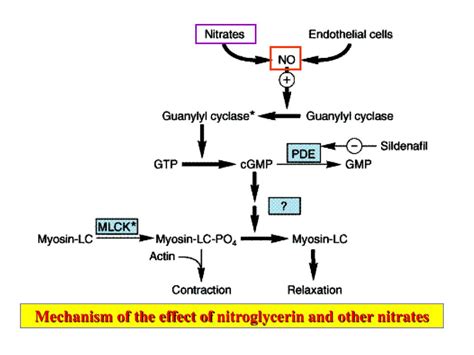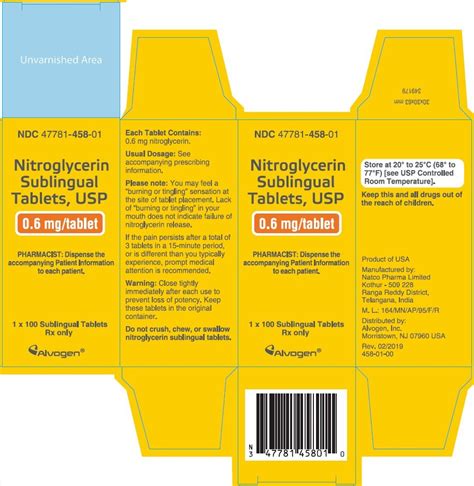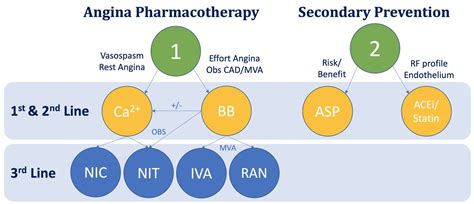Intro
Discover the 7 nitroglycerin side effects, including headaches, dizziness, and low blood pressure, and learn about medication interactions, dosage, and cardiovascular risks associated with this heart medication.
Nitroglycerin is a medication commonly used to treat angina, a condition characterized by chest pain due to reduced blood flow to the heart. It belongs to a class of medications known as nitrates, which work by relaxing and widening blood vessels to improve blood flow to the heart. While nitroglycerin is effective in managing angina, it can also cause several side effects. Understanding these side effects is crucial for patients to manage their condition effectively and minimize potential risks.
Nitroglycerin side effects can range from mild to severe and may vary from person to person. Common side effects include headache, dizziness, and lightheadedness, which are often due to the sudden drop in blood pressure. These symptoms are usually temporary and may resolve on their own. However, some patients may experience more severe side effects, such as allergic reactions, increased heart rate, or even methemoglobinemia, a condition where the amount of oxygen in the blood decreases.
The importance of understanding nitroglycerin side effects cannot be overstated. By being aware of these potential effects, patients can take steps to mitigate them and ensure safe use of the medication. This includes following the prescribed dosage, monitoring blood pressure, and being cautious when changing positions or engaging in physical activities. Furthermore, patients should consult their healthcare provider if they experience any unusual or severe side effects, as these may require immediate medical attention.
Nitroglycerin Mechanism of Action

Benefits of Nitroglycerin
The benefits of nitroglycerin in managing angina are well-documented. By providing quick relief from chest pain, nitroglycerin improves the quality of life for patients with angina. It allows them to engage in daily activities with reduced fear of angina attacks. Moreover, nitroglycerin can be used prophylactically before activities that may trigger angina, such as exercise or sexual activity, to prevent chest pain from occurring.Nitroglycerin Administration and Dosage

Precautions and Interactions
Patients taking nitroglycerin should be aware of potential interactions with other medications, such as phosphodiesterase inhibitors (e.g., sildenafil), which can lead to a dangerous drop in blood pressure. Additionally, nitroglycerin should be used with caution in patients with certain medical conditions, such as severe anemia, increased intracranial pressure, or recent head trauma. It is also important for patients to inform their healthcare provider about any medications they are currently taking, including over-the-counter drugs and supplements, to minimize the risk of adverse interactions.<h2_COMMON Nitroglycerin Side Effects

Less Common but Serious Side Effects
While less common, some patients may experience more serious side effects, including: - Methemoglobinemia: A condition where the amount of oxygen in the blood decreases, which can be life-threatening. - Allergic reactions: Such as hives, itching, or difficulty breathing. - Increased heart rate: As the body compensates for the drop in blood pressure. - Orthostatic hypotension: A significant drop in blood pressure when standing up, which can lead to fainting.Managing Nitroglycerin Side Effects

Importance of Patient Education
Patient education plays a crucial role in the safe and effective use of nitroglycerin. By understanding how to use the medication correctly, recognizing potential side effects, and knowing when to seek medical help, patients can better manage their angina and reduce the risk of complications. Healthcare providers should ensure that patients are well-informed about nitroglycerin, including its benefits, side effects, and any necessary precautions.Future Directions in Angina Management

Conclusion and Next Steps
In conclusion, while nitroglycerin is an effective medication for managing angina, it is crucial for patients to be aware of its potential side effects. By understanding these effects and taking steps to mitigate them, patients can ensure the safe and effective use of nitroglycerin. As research into new treatments for angina continues, patients and healthcare providers must stay informed about the latest developments and advancements in the field.What are the most common side effects of nitroglycerin?
+The most common side effects of nitroglycerin include headache, dizziness, and lightheadedness, which are often due to the sudden drop in blood pressure.
Can nitroglycerin be used with other medications?
+Nitroglycerin should be used with caution when taking other medications, especially phosphodiesterase inhibitors, as it can lead to a dangerous drop in blood pressure. Patients should consult their healthcare provider before taking any new medications.
How can I manage nitroglycerin side effects?
+To manage nitroglycerin side effects, patients should follow the prescribed dosage carefully, change positions slowly, avoid alcohol and certain medications, stay hydrated, and monitor blood pressure regularly.
We invite you to share your thoughts and experiences with nitroglycerin and its side effects in the comments below. Your insights can help others better understand and manage their condition. If you found this article informative, please consider sharing it with others who may benefit from this information. Together, we can work towards better health outcomes for all.
